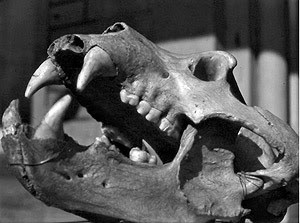(which to be fair he never actually wrote, but should have).
Although I went to a fairly good high school, and in an era when scholarship was perhaps held in higher esteem than of late; I don't recall studying Alexander Pope at all. This seems odd, he was a thoughtful poet and a very quotable one. In fact he trails only Shakespeare with regard to entries in many compilations of quotes.
I think the omission was intentional.
Pope was handicapped in life both by a spinal condition that gave him a very hunched over stature, and by being a member of the Roman Catholic faith, then out of favor in England. Perhaps these combined to put a bit of extra bite in his writings.
No, that understates it. Alexander Pope may well have been the most vicious writer in the history of the English language. He frequently unloaded on the many enemies he made in both personal and professional matters. Consider this gem:
| "Wit pass’d thro’ thee no longer is the same, | |
As meat digested takes a diff’rent name;"
|
Yes, you can see why exposing high school kids to that level of sarcasm would not go well at all.
So I only discovered Pope as an adult, and it has been a treat. My favorite work of his is The Essay on Man. In it Pope ponders man's place in the universe, musing at length about where Man sits between God and Angels above, and dumb beasts below.
Pope was, of course, a dog lover. Because he had many enemies he had to, for his own protection, go about with a brace of loaded pistols and a gigantic Great Dane named Bounce. As Pope in his crippled state was only about 4'8'', the dog loomed protectively over him.
Among Pope's many quotable lines is this one:
"Histories are more full of examples of the fidelity of dogs than of friends."
I was musing on some of Pope's themes the other day when I stopped by to visit with my pal Bear who lives across the alley. If Pope had ever gotten around to writing "The Essay on Dog" I think Bear would be an exemplary narrator. But instead lets just settle for some minor reworking of a few lines of the Essay on Man.
Great poetry? No. Doggerel? Why, yes...
"Hope Springs Eternal in the Canine Breast.
"Man eats the pork chop, but throws away the rest."
-------------
"Oh, blindness to the future! kindly giv'n,
That each may fill the circle marked by Heav'n,
Who sees with equal eye, as God of all,
A Hero perish, or a sparrow fall,
Atoms of system into ruin hurled,
And now a bubble burst, and now a SQUIRREL!!!!"

















































